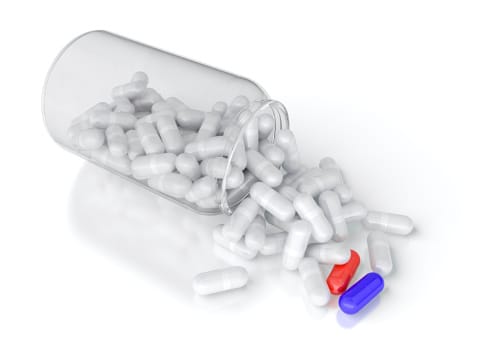Opioid dependence is the term used to describe a reliance on the effects of opioid drugs or medications. In some cases, dependent people go on to develop the drug cravings and dysfunctional behaviors associated with opioid addiction. Opioid-dependent people often use cannabis in the form of marijuana, hashish or hashish oil. In a study published in September 2013 in the journal Drug and Alcohol Dependence, a multi-institution research team sought to determine whether cannabis use alters the effectiveness of treatment programs designed to address opioid dependence in teenagers and young adults.
Opioid Dependence and Addiction
Opioid dependence occurs when an opioid user takes a drug or medication often enough to become physically reliant on the changes that substance makes in normal brain function. Some dependent people take opioids according to a doctor’s instructions as a treatment for significant pain symptoms. Others take opioids recreationally outside of the context of prescribed use. In either case, dependence is signaled by such things as an increasing tolerance to the effects of opioids over time and the presence of withdrawal symptoms when opioid use ends or falls off sharply. In itself, dependence is not necessarily a harmful state for a prescription opioid user. In fact, many people affected by chronic pain develop dependence when they take their opioid medications properly over extended periods of time. Unlike opioid dependence, opioid addiction is always harmful to the individual. Addicts are dependent individuals who develop persistent urges (cravings) for opioid intake and set up a lifestyle designed as much as possible to satisfy those urges. Typically, opioid addicts (and other addicts) do such things as forsake personal or social obligations in order to acquire or use drugs, participate in highly risky activities that can result in accidents or other adverse outcomes, and continue their pattern of drug use even when the damaging consequences of their behaviors become obvious.
Cannabis Use
Cannabis is the world’s most popular illicit or illegal drug, the World Health Organization reports. In the U.S., marijuana use occurs far more often than the use of either hashish or hashish oil. Like opioids and essentially all other commonly abused substances, THC-containing cannabis has the ability to produce dependence and addiction by changing the brain’s typical mixture of critical chemicals called neurotransmitters. Apart from issues of dependence or addiction, regular cannabis use can also lead to such negative health consequences as temporary or permanent degradation of conscious brain function, increased risks for the development of schizophrenia, increased risks for chronic lung disease or lung infections, and increased risks for throat or lung tissue damage.
Impact on Opioid Dependence Treatment
In the study published in Drug and Alcohol Dependence, researchers from Harvard Medical School and three other U.S. institutions examined the potential impact of cannabis use on the effectiveness of two standard programs used to counter the effects of opioid dependence. One of these programs involves 12 weeks of treatment with two medications, called buprenorphine and naloxone. The other involves a more concentrated two-week course of buprenorphine/naloxone intake. Both programs also include an appropriate course of psychotherapy. During the study, 76 participants between the ages of 15 and 21 received the longer form of treatment, while another 76 participants in the same age group received the shorter form. The researchers took cannabis use histories for all 152 participants, and also tracked current cannabis use just prior to the start of opioid dependence recovery. They found that, on average, the study participants had used cannabis on three days in the month prior to treatment. On a more detailed level, roughly 17 percent of the participants used the drug every day, while 33 percent didn’t use it at all. For cannabis users, lifetime involvement with the drug averaged about four years. The average age at the start of cannabis use was 15. When they correlated cannabis use patterns with the effectiveness of opioid dependence treatment, the researchers concluded that cannabis use does not significantly alter treatment outcomes. This held true for both current patterns of cannabis intake and lifetime histories of cannabis intake. In addition, a person’s level of cannabis use apparently has no impact on his or her level of opioid use. Despite their negative findings, the study’s authors emphasize the fact that cannabis use presents its own substantial health risks apart from any impact on opioid treatment.

